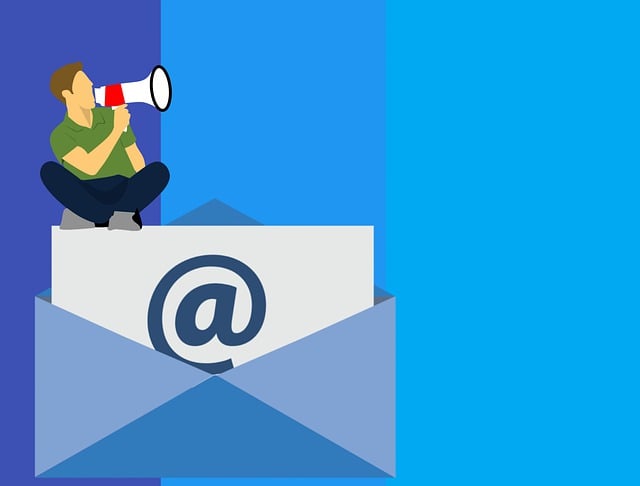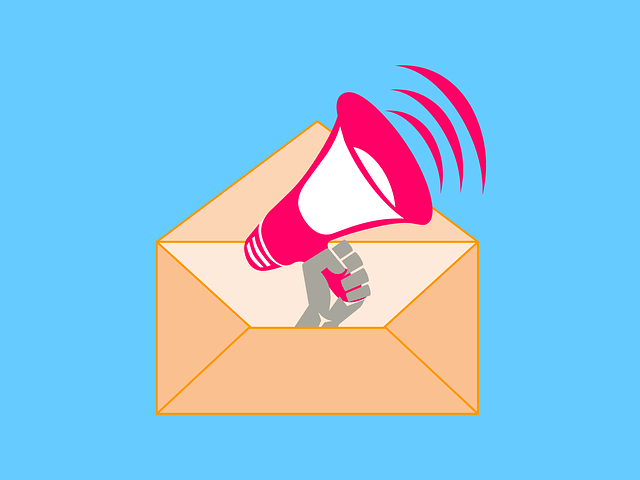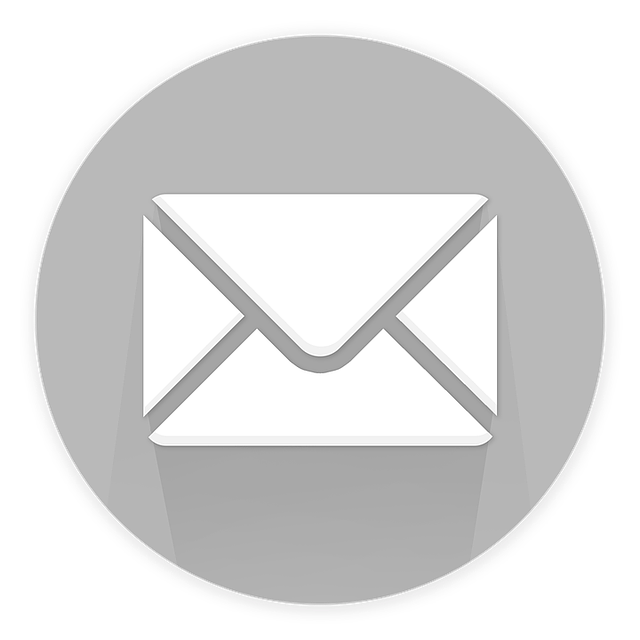Imagine a world where your email marketing campaigns run smoothly, effortlessly, and with incredible results. Well, guess what? That world exists, and it’s called B2B Email Marketing Automation.
In this comprehensive guide, we will show you how to harness the power of automation to revolutionize your B2B email marketing strategy.
Gone are the days of manually sending individual emails and hoping for the best. With B2B email marketing automation, you can streamline your processes, save time, and achieve better engagement with your target audience. But that’s just the beginning.
In this guide, we will delve into the benefits of B2B email marketing automation, providing you with expert tips and best practices to ensure your campaigns are a resounding success. We’ll also help you navigate the daunting task of choosing the right automation platform and guide you through the implementation process.
Get ready to take your B2B email marketing to new heights. It’s time to unlock the true potential of automation and achieve unparalleled success in your marketing efforts.
Let’s dive in!
Key Takeaways
- B2B email marketing automation streamlines processes, saves time, and improves engagement.
- Personalization strategies and clear, concise subject lines and email copy are key to capturing attention and driving engagement.
- Testing and optimizing campaigns through A/B testing and analytics tools are essential for maximum effectiveness and ROI.
- Choosing the right B2B email marketing automation platform involves considering features like segmentation, personalization, analytics, and CRM integration.
The Benefits of B2B Email Marketing Automation
Get ready to discover the amazing perks of using B2B email marketing automation! With personalization strategies and lead nurturing techniques, you can take your B2B email marketing to a whole new level.
Automation allows you to tailor your emails to individual recipients, making them feel valued and increasing engagement. By segmenting your email list based on specific criteria, you can send targeted messages that resonate with each recipient’s needs and interests. This not only improves the effectiveness of your campaigns but also helps build stronger relationships with your prospects and customers.
Additionally, automation enables you to nurture leads through automated drip campaigns, ensuring that you stay top-of-mind and guide them through the sales funnel.
So, let’s dive into the best practices for B2B email marketing automation, where you’ll learn even more effective strategies to boost your campaigns.
Best Practices for B2B Email Marketing Automation
In order to effectively utilize B2B email marketing automation, there are several best practices to keep in mind.
First, focus on building a high-quality email list by targeting relevant contacts and regularly updating your database.
Next, crafting compelling email content is crucial to engage your audience and drive conversions.
Finally, don’t underestimate the importance of testing and optimizing your campaigns to ensure maximum effectiveness and ROI.
By following these best practices, you can enhance the success of your B2B email marketing automation efforts.
Building a High-Quality Email List
Boost your email marketing success by creating a top-notch email list that will captivate and engage your target audience. To achieve this, implement effective email segmentation strategies and utilize lead generation techniques.
Email segmentation allows you to divide your audience into smaller, more targeted groups based on their preferences, demographics, or behavior. This enables you to tailor your emails specifically to their interests, increasing the chances of engagement and conversions.
Additionally, leverage lead generation techniques to continuously grow your email list. Offer valuable content, such as ebooks or webinars, in exchange for email addresses. You can also use website pop-ups or social media ads to capture leads.
By building a high-quality email list through segmentation and lead generation, you set the foundation for crafting compelling email content that will resonate with your audience and drive results.
Crafting Compelling Email Content
Crafting compelling email content is essential for capturing your audience’s attention and driving meaningful engagement and conversions. To improve open rates and encourage recipients to take action, it’s crucial to deliver content that resonates with them.
Personalization strategies play a key role in achieving this. By segmenting your email list according to various criteria such as demographics, purchase history, or behavior, you can tailor your content to meet the specific needs and interests of each group. Use dynamic tags to insert recipients’ names or other personalized information, creating a sense of individual connection.
Additionally, focus on creating clear, concise, and persuasive subject lines and email copy that incites curiosity and prompts readers to open and engage with your emails. By crafting compelling email content with personalized touches, you can significantly boost your email marketing effectiveness.
In the next section, we’ll discuss testing and optimizing campaigns to further enhance your email marketing strategy.
Testing and Optimizing Campaigns
To truly maximize the effectiveness of your email marketing strategy, it’s crucial to continuously test and optimize your campaigns for optimal results. Testing strategies help you identify what works and what doesn’t, allowing you to make data-driven decisions. A/B testing, for example, enables you to compare two variations of your email and determine which one performs better. You can test different elements such as subject lines, CTAs, and email designs. Additionally, you can use analytics tools to track open rates, click-through rates, and conversions to gain insights into your campaign’s performance. Once you have gathered enough data, it’s time to optimize. This involves making changes based on the results of your tests to improve engagement and conversion rates. By constantly refining your campaigns, you can achieve better outcomes and drive more valuable interactions with your audience. Now, let’s explore how to choose the right b2b email marketing automation platform.
Choosing the Right B2B Email Marketing Automation Platform
When choosing the right B2B email marketing automation platform, there are several key features to consider.
Look for a platform that offers robust segmentation and personalization capabilities, as well as advanced analytics and reporting tools.
Integration with CRM and other tools is also important, as it allows for seamless data synchronization and a more holistic view of your marketing efforts.
Finally, consider the pricing and support options available, ensuring that the platform fits within your budget and offers the level of support you need to succeed.
Features to Consider
Consider the various features available to you when implementing b2b email marketing automation, as they can greatly enhance your campaign’s effectiveness. Here are three key features to look for:
-
Customization options: Look for a platform that allows you to customize your emails to match your brand’s voice and style. This will help you create a cohesive and professional image for your business.
-
Email personalization: Personalizing your emails with the recipient’s name, company, or other relevant information can significantly increase engagement and response rates. Look for a platform that offers robust personalization options.
-
Advanced segmentation: Being able to segment your email list based on various criteria, such as industry, job title, or behavior, allows you to send targeted and relevant content to specific groups of recipients. Look for a platform that offers advanced segmentation capabilities.
By considering these features, you can ensure that your b2b email marketing automation platform meets your needs and helps you achieve your marketing goals. Integration with CRM and other tools is another important aspect to consider, as it allows for seamless data flow and improved efficiency.
Integration with CRM and other Tools
Now that you know what features to look for in a B2B email marketing automation tool, let’s delve into the importance of integration with CRM and other tools.
Seamless integration with your CRM system is crucial for effective lead management and tracking. It allows you to sync contact information, automate lead nurturing workflows, and gain valuable insights into your customer interactions.
Additionally, consider the compatibility of the tool with other business tools you use, such as analytics platforms or customer support software. A well-integrated system ensures a smooth flow of data and enables you to leverage the full potential of your marketing efforts.
As we move forward, it’s essential to explore the pricing and support options available for these automation tools, ensuring you make an informed decision for your business.
Pricing and Support Options
Pricing and support options are crucial factors to consider when selecting an email marketing automation tool as they can greatly impact the success and efficiency of your marketing efforts. Here are some important things to consider:
-
Pricing options: Look for a tool that offers flexible pricing plans to fit your budget. Consider whether the pricing is based on the number of contacts, the number of emails sent, or other factors. Also, check if there are any additional costs for add-ons or upgrades.
-
Customer support: Ensure that the email marketing automation tool provides reliable and responsive customer support. Look for options such as live chat, phone support, and email support. It’s important to have access to knowledgeable support staff who can help you troubleshoot any issues quickly.
-
Training and resources: Consider whether the tool offers training materials, tutorials, and resources to help you make the most of its features. Look for a platform that provides comprehensive documentation and educational resources to help you get up to speed quickly.
-
Community and user forums: Check if the tool has an active user community or forums where you can connect with other users. This can be a valuable resource for sharing best practices, getting tips, and learning from others’ experiences.
By considering these factors, you can choose an email marketing automation tool that not only fits your budget but also provides the support you need to implement it successfully into your B2B email marketing strategy.
Implementing B2B Email Marketing Automation Successfully
Mastering the art of B2B email marketing automation can revolutionize your business, empowering you to connect with customers on a deeper level and drive meaningful results. To ensure successful implementation, it’s crucial to adopt effective strategies.
First, define your goals and objectives clearly. Determine what actions you want your recipients to take and craft compelling messages that align with those goals.
Next, segment your audience based on their characteristics and behaviors, allowing for personalized and targeted communication. Additionally, optimize your email design and content to enhance engagement and ensure deliverability.
Finally, regularly test and analyze your campaigns to identify areas for improvement and refine your approach. By following these steps, you can implement B2B email marketing automation successfully, increasing your chances of achieving measurable success and ROI.
Transitioning into the next section, let’s explore how to measure success and ROI in B2B email marketing automation.
Measuring Success and ROI in B2B Email Marketing Automation
When it comes to measuring success and ROI in B2B email marketing automation, there are key metrics you need to track. By analyzing data such as open rates, click-through rates, and conversion rates, you can gain valuable insights into the effectiveness of your email campaigns.
This data can help you make improvements and optimize your strategy to align with your sales and revenue goals.
Key Metrics to Track
To effectively track the success of your B2B email marketing automation, imagine yourself diving into a sea of data. Key metrics like open rates, click-through rates, and conversion rates act as signposts guiding your path towards greater engagement and conversions. To make the most of these metrics, keep a close eye on the following:
-
Open rates: Monitor how many recipients actually open your emails. A high open rate indicates strong subject lines and a targeted audience.
-
Click-through rates: Measure the number of clicks on your email’s call-to-action (CTA). This metric highlights the effectiveness of your content and design.
-
Conversion rates: Track the percentage of recipients who take the desired action, such as making a purchase or filling out a form. This metric directly reflects your email’s ability to drive conversions.
-
Engagement metrics: Analyze metrics like time spent reading emails, social shares, and forwards. These metrics indicate how well your content resonates with your audience.
By regularly tracking these key metrics, you can gain valuable insights into the success of your B2B email marketing automation. Transitioning into analyzing data and making improvements, you can use these insights to optimize your email campaigns for even better results.
Analyzing Data and Making Improvements
Diving into the sea of data and making improvements is a thrilling journey that can unlock untapped potential for your email campaigns. By analyzing the data collected from your email marketing automation, you can gain valuable insights into your audience’s behavior and preferences.
This allows you to improve targeting by segmenting your audience based on their demographics, interests, and engagement levels. With this information, you can personalize your email content, ensuring that each message resonates with the individual recipient. By enhancing personalization, you can create a more meaningful connection with your audience, increasing the chances of conversion.
As you delve into the data and make these improvements, you’ll align your email marketing efforts with your sales and revenue goals, ultimately driving more success for your business.
Aligning with Sales and Revenue Goals
Get ready to boost your email marketing success by aligning with your sales and revenue goals. To effectively align your email marketing strategy with your overall marketing strategy, consider the following steps:
-
Define your target audience: Identify the specific characteristics and needs of your ideal customers to tailor your email campaigns accordingly.
-
Create personalized content: Craft emails that are relevant and valuable to your recipients, addressing their pain points and offering solutions.
-
Implement lead scoring: Assign a score to each lead based on their engagement and likelihood to convert, allowing you to prioritize and focus on high-quality leads.
-
Nurture leads through automation: Use automated workflows to nurture leads at each stage of the sales funnel, sending targeted emails to move them closer to conversion.
By aligning your email marketing efforts with your sales and revenue goals, you can maximize conversion rates and drive more revenue for your business.
Now, let’s dive into case studies and success stories in B2B email marketing automation.
Case Studies and Success Stories in B2B Email Marketing Automation
Companies of all sizes have implemented b2b email marketing automation to streamline their processes, boost engagement, and achieve impressive results, as showcased by these captivating case studies and success stories.
One such case study involves a software company that used email personalization to increase customer retention by 20%. By sending targeted emails based on customer behavior and preferences, they created a personalized experience that resonated with their audience, leading to higher engagement and loyalty.
Another success story comes from a manufacturing company that automated their email campaigns, resulting in a 30% increase in lead conversion rates. With automated follow-ups and personalized content, they were able to nurture prospects more effectively, ultimately driving more sales.
These case studies highlight the power of b2b email marketing automation in driving results and achieving business goals.
Frequently Asked Questions
What are the common challenges faced when implementing B2B email marketing automation?
When implementing B2B email marketing automation, you may encounter common challenges and implementation problems. These obstacles can include difficulties with integrating the automation software into your existing systems. You may also face challenges in creating effective and engaging email content. Additionally, managing and segmenting your contact lists can be a challenge. Another common challenge is ensuring deliverability and inbox placement. It is crucial to address these challenges by carefully planning your automation strategy, investing in the right tools, and continuously monitoring and optimizing your campaigns for success.
How can B2B email marketing automation help in nurturing leads and converting them into customers?
Lead nurturing strategies are essential for converting leads into customers. Did you know that personalized emails generate up to 6 times higher transaction rates? By leveraging b2b email marketing automation, you can easily implement these strategies.
With automated workflows, you can nurture leads by sending personalized emails at the right time, based on their behavior and preferences. This increases engagement and builds trust, ultimately leading to higher conversion rates and more satisfied customers.
Are there any specific industries or sectors that can benefit the most from B2B email marketing automation?
Specific industries and sectors that can benefit the most from B2B email marketing automation include healthcare and technology.
By implementing automation in these industries, you can effectively nurture leads and convert them into customers.
In the healthcare sector, automation allows for personalized communication with patients and healthcare professionals, improving engagement and patient outcomes.
In the technology sector, automation streamlines lead nurturing, allowing for timely and targeted communication, resulting in increased conversions and revenue.
What are some key metrics to track and measure the success of B2B email marketing automation campaigns?
So, you want to know how to measure the success of your B2B email marketing automation campaigns? Well, let me tell you, it’s all about those key performance indicators (KPIs).
One of the most important KPIs to track is the email open rate. After all, what’s the point of sending all those automated emails if no one’s even opening them? So, keep an eye on that open rate and make sure your emails are engaging enough to grab your audience’s attention.
How can B2B email marketing automation integrate with other marketing channels and strategies for a comprehensive approach?
To integrate b2b email marketing automation with other marketing channels and strategies, start by optimizing your email content. Make sure it’s engaging, personalized, and relevant to your target audience.
Next, leverage social media platforms to promote your email campaigns and drive traffic to your website. Use social sharing buttons in your emails and encourage recipients to share your content.
By combining these tactics, you can create a comprehensive approach that maximizes your marketing efforts.
Conclusion
In conclusion, B2B email marketing automation is a game-changer for businesses looking to streamline their communication and drive results. By adopting this strategy, you can save time, boost efficiency, and reach your target audience with personalized messages.
The benefits are undeniable, and by following best practices and choosing the right platform, you can implement successful campaigns. Don’t just take our word for it – numerous case studies and success stories prove the effectiveness of B2B email marketing automation.
So why wait? Start investigating the truth of this theory and unlock the full potential of your email marketing strategy today.








